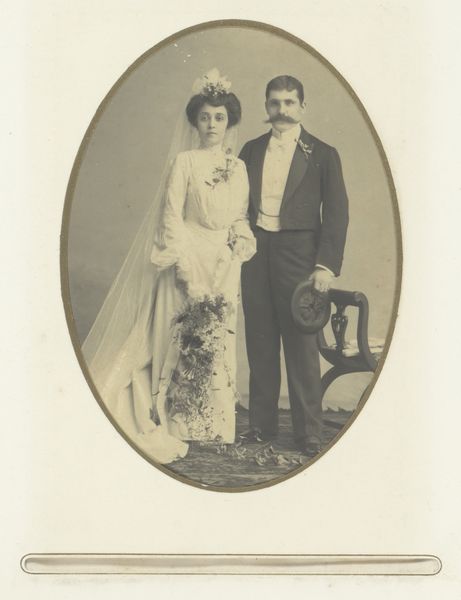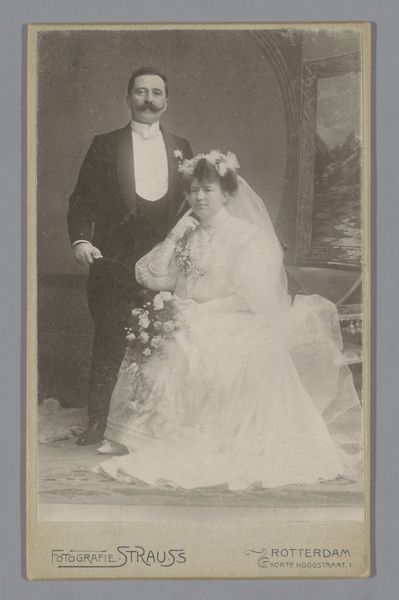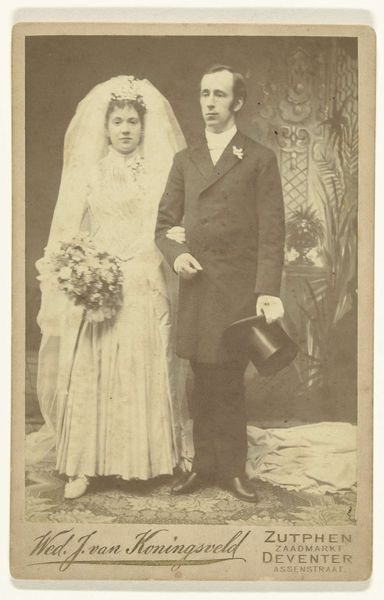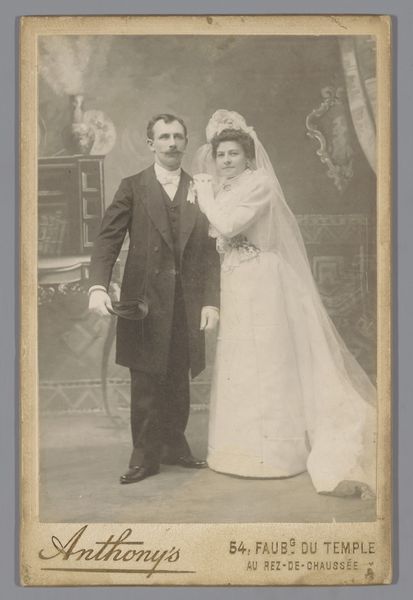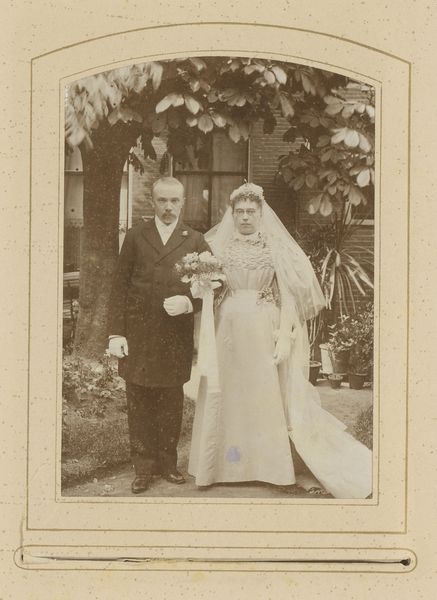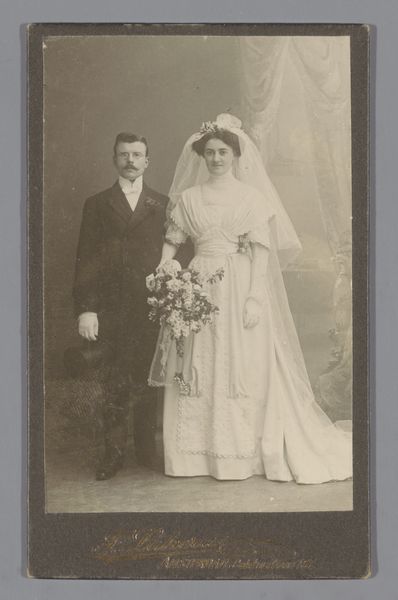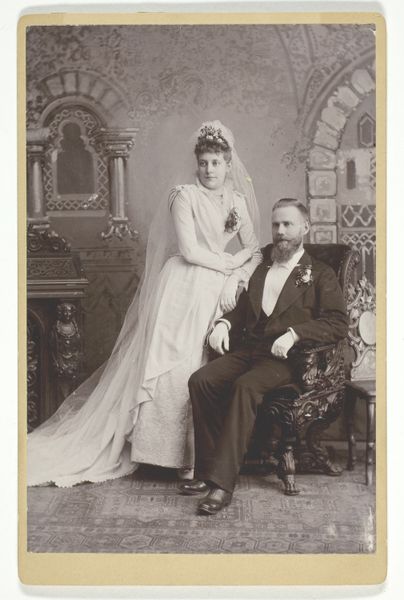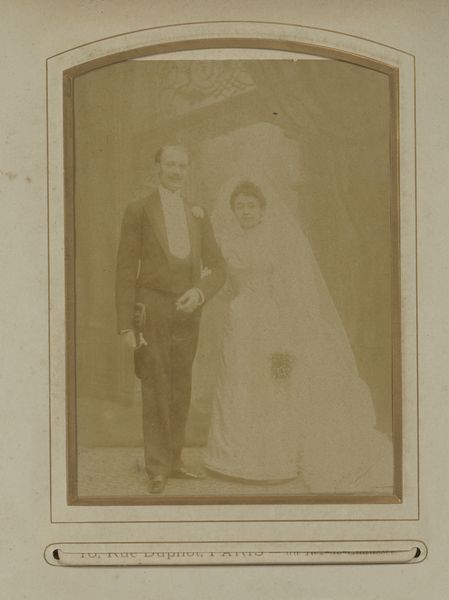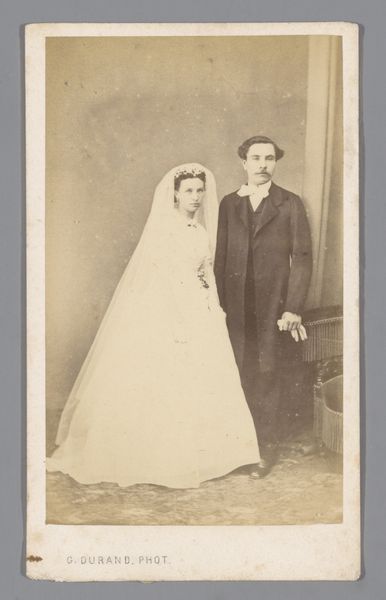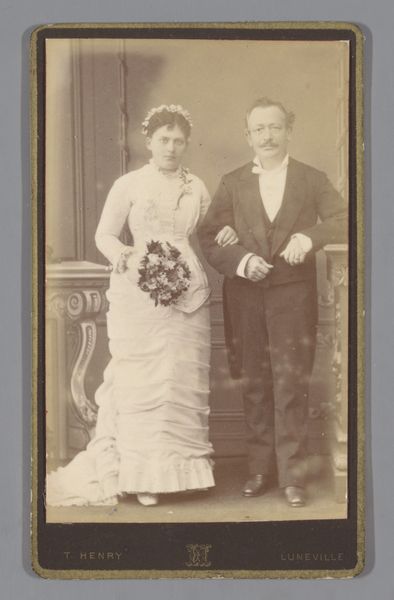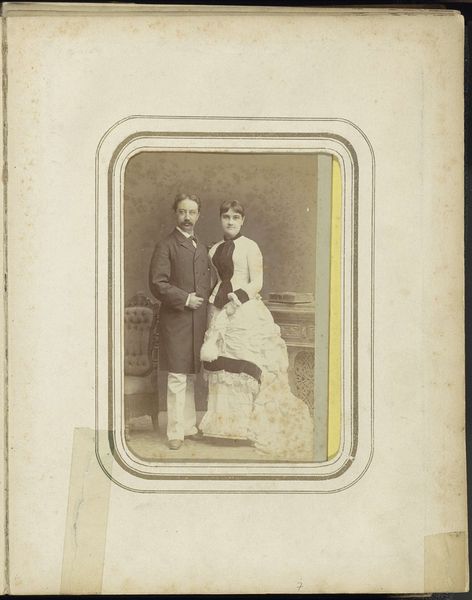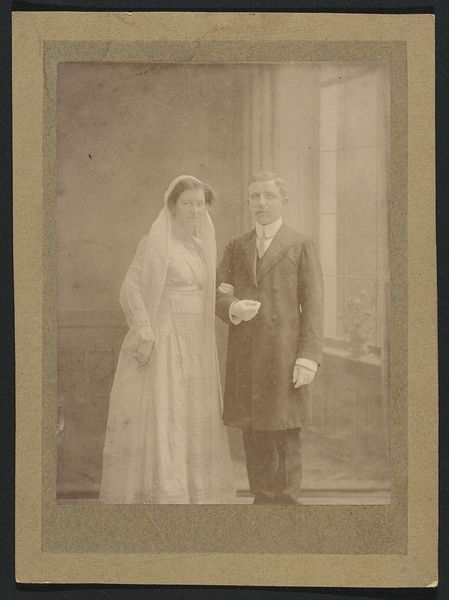
Dimensions: height 138 mm, width 98 mm
Copyright: Rijks Museum: Open Domain
Curator: Here we have "Portret van een echtpaar", or "Portrait of a Couple," an albumen print photograph created sometime between 1860 and 1900. Editor: It’s immediately striking, isn't it? There's a certain gravity in the composition—a very formal stillness. The texture too, there is such visual detail considering this photograph is well over 100 years old. Curator: Indeed. Albumen prints were prized for their sharpness and detail. Looking at the historical context, these kinds of formal portraits became increasingly popular among the middle class during the late 19th century. They offered a way to document significant life events and solidify social standing. Editor: Precisely. You can sense the aspiration in every carefully arranged detail. Note the placement of the couple in relation to one another, for instance, it speaks to a narrative that society was attempting to normalize with each generation: man leading, and woman following closely by his side. Curator: A pointed observation. But let's not overlook the formal qualities. Notice the balance of light and shadow and the subtle details that work towards that goal. From a technical standpoint, the photograph excels in its depth of field and range of tones—all the while within the constraints of a relatively new medium. The studio props work well with creating the desired mood too, especially that eagle-emblazoned sculptural relief positioned perfectly in frame. Editor: Yes, those backdrops became instantly recognizable. Mass production changed not only manufacturing, but photography too. Such items signal a deliberate presentation of respectability and affluence which says a great deal about societal aspirations and expectations, it's quite staged. Even the yellowing is historically important! Curator: Perhaps, but to me, the couple's fixed gaze directly confronting the lens tells a story far beyond their staged setting. They offer their countenances forthrightly, demanding respect not only from the immediate photographer, but us also, the now future beholder. Editor: And yet, it’s a fabricated reality. The subjects, while present, participate in a larger symbolic framework, giving insight into cultural conventions and social history. Thank you, I had not considered how their expressions factored into this dialogue. Curator: The photograph succeeds by existing as both an aesthetic creation and an important historical record.
Comments
No comments
Be the first to comment and join the conversation on the ultimate creative platform.
